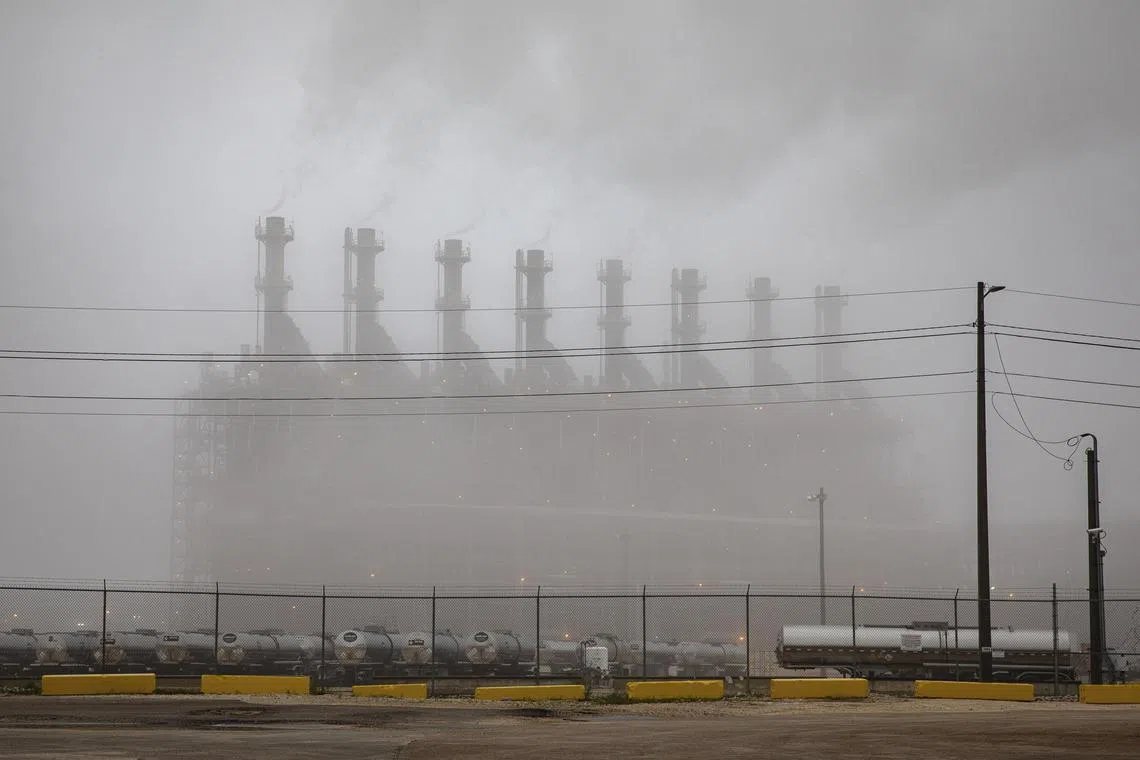Nations that vowed to halt warming are expanding fossil fuels, report finds
Sign up now: Get ST's newsletters delivered to your inbox

A report found that nations plan to keep increasing coal production until 2030, and oil and gas production decades beyond that.
PHOTO: NYTIMES
Follow topic:
LONDON – In 2030, if current projections hold, the United States will drill for more oil and gas than at any point in its history. Russia and Saudi Arabia plan to do the same.
They are among the world’s fossil fuel giants that, together, are on course this decade to produce twice the amount of fossil fuels
The annual United Nations Environment Programme (Unep) Production Gap report, which looked at 20 major fossil fuel producing countries, underscores the wide gap between world leaders’ lofty promises to take stronger action on climate change and their nations’ actual production plans.
In November, leaders are set to gather at a global climate summit in Dubai to discuss how to reduce their planet-warming emissions. But in the face of strong opposition from major fossil fuel producers, climate conferences have so far shied away from discussing a phase-out of fossil fuels.
Emissions from burning coal, oil and gas are the main drivers of global warming, which is already intensifying storms, flooding, heat waves, wildfires and droughts. Scientists say it is more likely than not that 2023 will be the hottest year on record.
“We cannot address climate catastrophe without tackling its root cause: fossil fuel dependence,” said UN Secretary-General Antonio Guterres.
“Fossil fuel emissions are already causing climate chaos, which is devastating lives and livelihoods,” he said. Yet, “governments are literally doubling down on fossil fuel production”.
Nearly every country signed the Paris Agreement in 2015, the global climate pact that aims to limit the rise in average global temperatures to well below 2 deg C, and ideally no more than 1.5 deg C, compared with pre-industrial levels.
And over the past decade, governments and businesses have made progress in weaning themselves from fossil fuels by ramping up wind and solar power, for example, and investing in electric vehicle infrastructure.
Yet the report issued on Wednesday, led by researchers at the Stockholm Environment Institute, found that nations plan to keep increasing coal production until 2030, and oil and gas production decades beyond that.
That means the world remains on track to produce around 110 per cent more oil, gas and coal through 2030 as would be allowable if governments wanted to limit warming to 1.5 deg C, the researchers warned. The world was also set to overshoot, by 69 per cent, the amount of fossil fuels consistent with limiting warming to 2 deg C.
Beyond those thresholds, the world faces the danger of irreversible and catastrophic damage from climate change, scientists say. The planet has already warmed an average of 1.2 deg C from pre-industrial levels.
There have been some signs of progress. In September, the first official report card on the global climate pact said the absolute worst-case climate change scenarios that were feared in the early 2010s looked far less likely today. The authors partly credited nations’ nascent efforts to rein in their emissions under the 2015 Paris Agreement, and the rapid growth in clean energy.
In October, the world’s leading energy agency predicted that the global demand for fossil fuels could in fact peak by 2030
Wednesday’s report lays the onus of curbing fossil fuel production squarely on the world’s richest nations. For each fossil fuel – coal, oil or gas – the combined levels of production being planned by the 10 highest-income countries alone would already warm the world beyond 1.5 deg C by 2040, said Dr Ploy Achakulwisut, who led the research.
State-owned companies control about half the world’s output of oil and gas, and more than half of coal. But even in countries like the US, where the public sector is dominant, government policies like fossil fuel subsidies and tax breaks continue to prop up production. Global fossil-fuel subsidies jumped to a record US$7 trillion (S$9.5 trillion) in 2022, according to the International Monetary Fund.
Some nations that sit on sizable fossil fuel reserves are now vying to be the last producers standing even as the overall market starts to slow, saying they can drill for fossil fuels more cleanly than their competitors, the researchers said.
“But when you take all of these together, that’s what leads to the production gap,” said Mr Michael Lazarus, a co-author of the report. “It’s that desire for each country to maximise their own production.” NYTIMES

